What is Anago no Tempura?
The beauty of tempura is that it’s such a versatile cooking method that works beautifully with various types of fish, but my absolute favorite is tempura anago (conger eel)!
Conger eels are a type of eel-shaped fish that live in the sandy bottoms of coastal waters. In Japan, they’re considered some of the best tempura fish around, and they’re popular all year long in the three biggest cities: Tokyo, Nagoya, and Osaka.
In this recipe article, I’ll walk you through everything from properly preparing conger eels to achieving the perfect tempura fry!

Visual Walkthrough & Tips
Here are my step-by-step instructions for how to make Conger Eel Tempura at home. For ingredient quantities and simplified instructions, scroll down for the Printable Recipe Card below.
This section aims to provide a comprehensive overview of the cooking steps and techniques with visuals. It also includes more in-depth tips and tricks and explains why I do what I do.
Start by measuring cold water into a jug and placing it in the refrigerator for about 20-30 minutes. If you’re using sparkling water, keep the unopened bottle in the fridge until you’re ready to mix the batter.
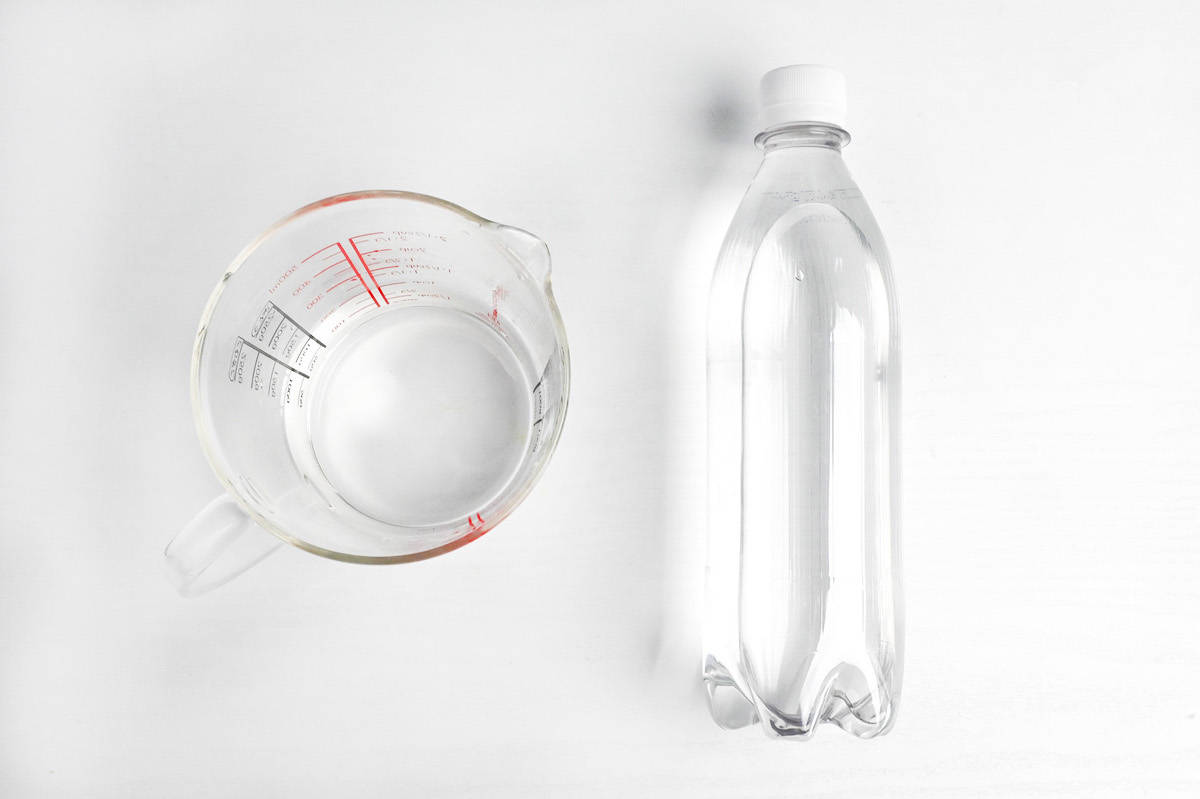
Ice-cold water is key for tempura batter. The cold temperature slows down gluten formation, which is what makes the difference between light, crispy tempura, and heavy, chewy coating. When this cold batter hits the hot oil, it creates an immediate steam reaction that forms those beautiful bubbles and crisp texture that make tempura so special.
In a medium bowl, sift together your cornstarch and cake flour, then give it a good mix.
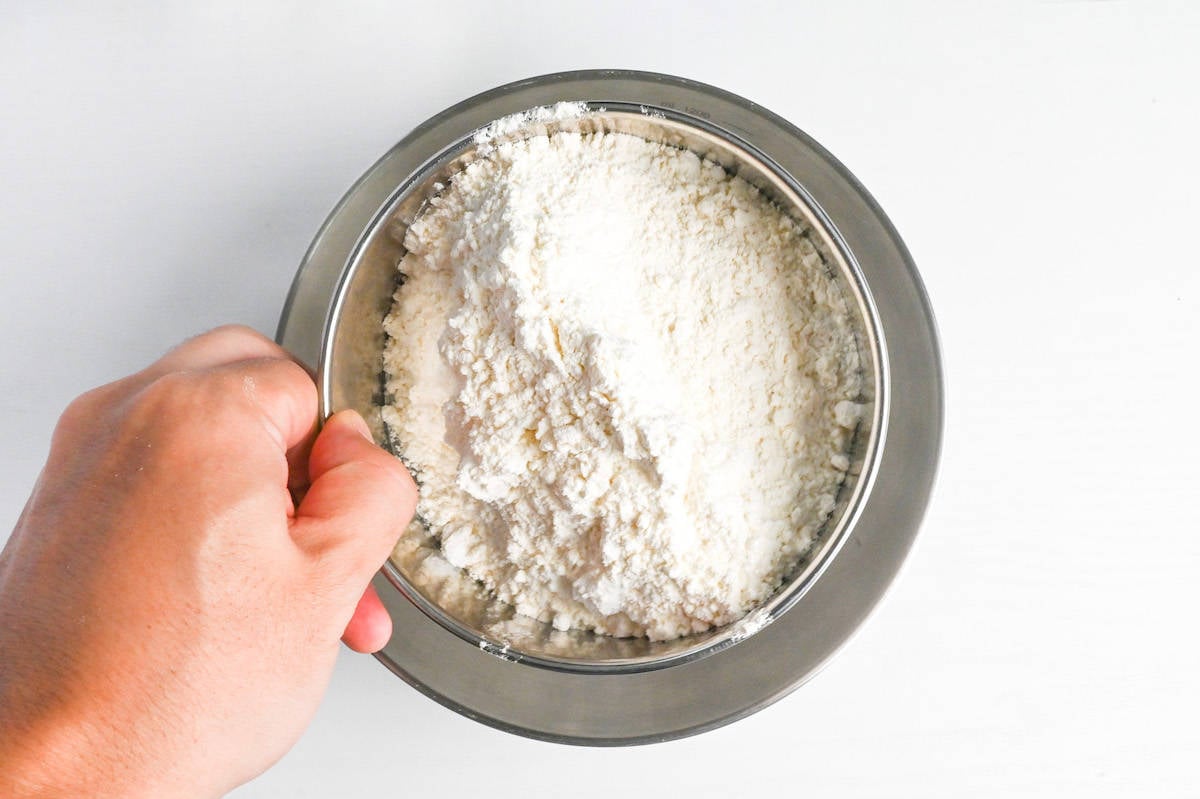
Pop this mixture into the freezer for 20-30 minutes too. This might seem excessive, but trust me, chilling all your ingredients makes a dramatic difference in the final texture.

Cake flour has less protein than all-purpose or bread flour. This means you’ll have less gluten development, which gives that airy, delicate coating that shatters when you bite into it. If you use bread flour, your tempura will be heavy and chewy, which is the opposite of what we’re going for!
While your ingredients are chilling, let’s prepare the eel. Conger eel has a slippery coating that needs to be removed. Sprinkle about 1 tablespoon of salt over the eel and gently rub it across the surface. This helps break down the slime layer that can cause fishy flavors in your final dish.
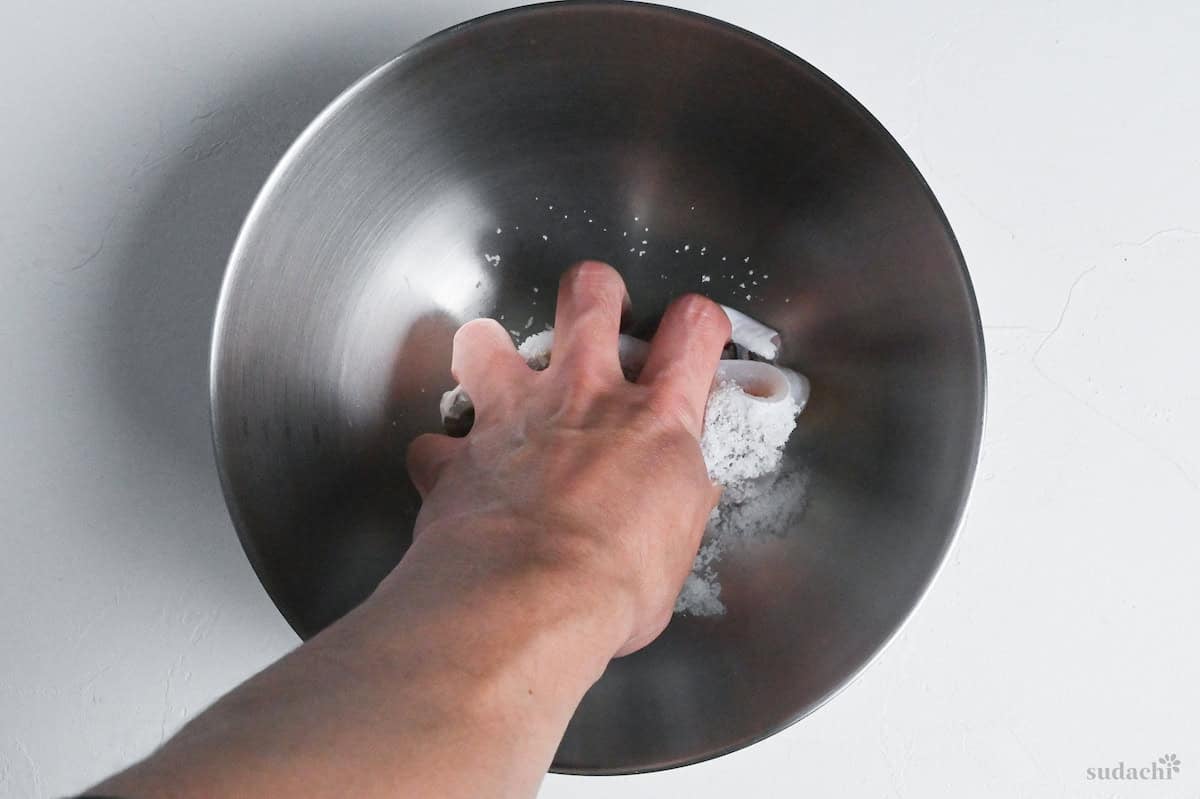
Rinse thoroughly under cold running water until all slime and salt are completely removed. You’ll notice the skin feels slightly different – cleaner and a bit rougher to the touch.
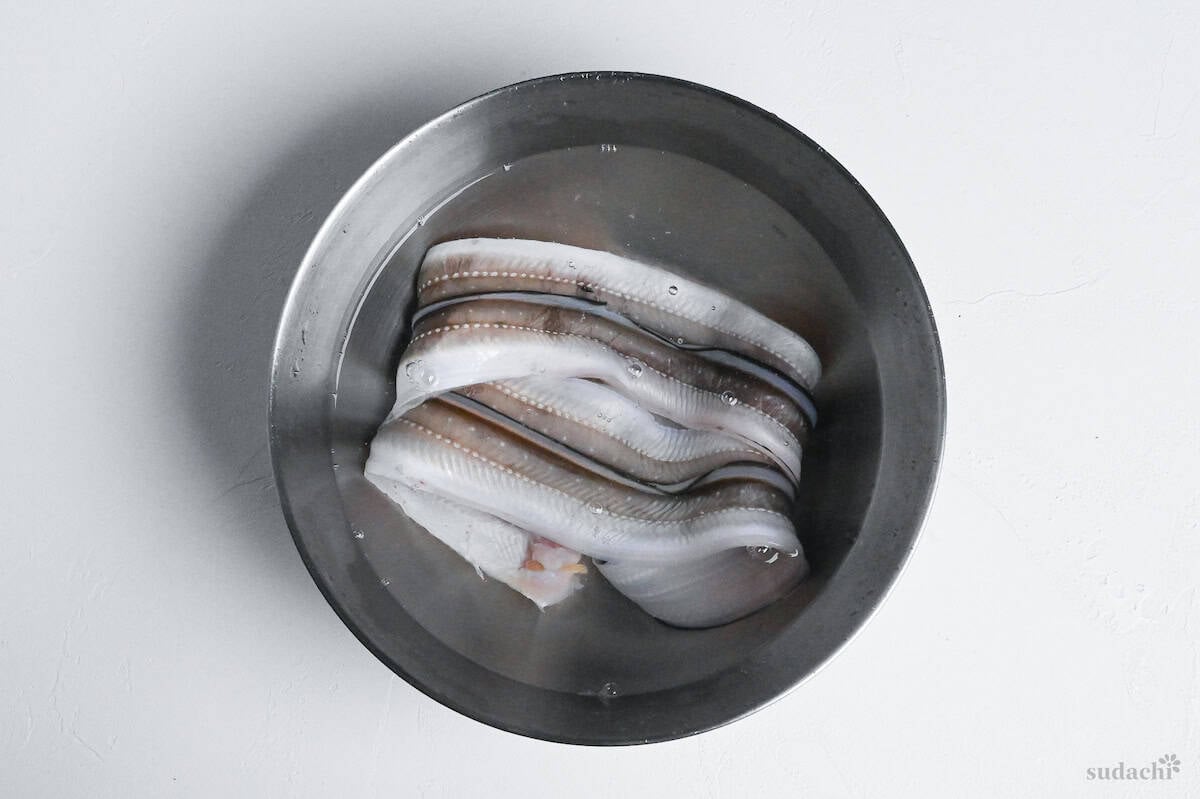
Place the eel skin-side up on a cutting board with a paper towel over the top. Pour hot water (70-75°C/160-167°F) over the skin. The slime will instantly turn white, making it easier to spot.

The controlled heat makes the skin proteins shrink a bit without actually cooking the flesh. It helps get rid of any remaining slime and makes the skin tighter to keep the eel from curling up while frying. This is a common problem with fish tempura.

Using the back of your knife (not the sharp edge), gently scrape away any white residue that appears. Be gentle here! You want to clean the eel without damaging the flesh.
Pat the eel completely dry with paper towels. This step is crucial for preventing dangerous oil spatters when frying.
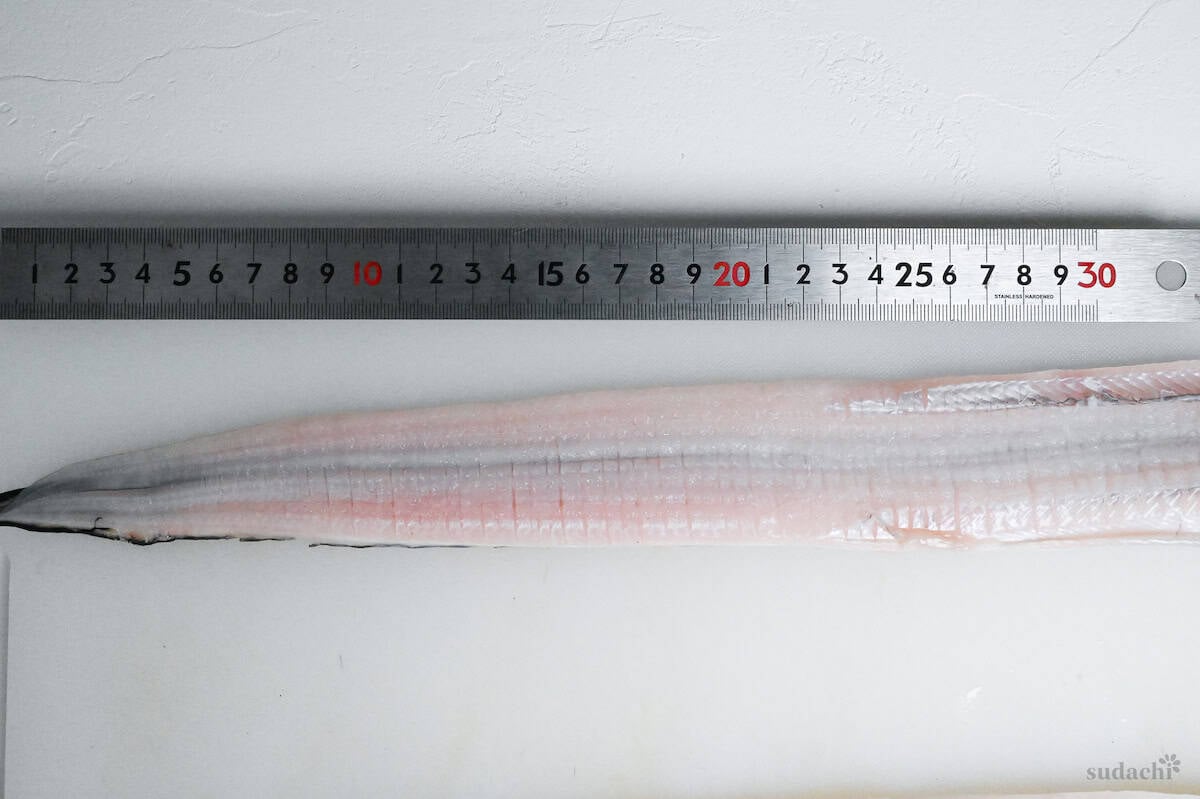
Now, cut the eel into manageable pieces into 2 or 3 (15cm/6-inch portions work perfectly) unless you use a big enough pot to accommodate one whole fish.

Before you start coating, if you’re using big conger eels with small bones that are still intact, make some small vertical cuts through the flesh at 3-4 mm intervals. You want to cut almost to the skin but not through it.
This technique, called “honekiri,” makes any remaining small bones unnoticeable when you’re eating. But you don’t have to do this if the conger eel is already completely deboned or you use relatively small eels.
Dust each piece with a thin layer of flour, making sure to cover all surfaces while shaking off any excess.

Now, it’s time to preheat your oil. Heat your oil to 180-190°C (356-374°F).
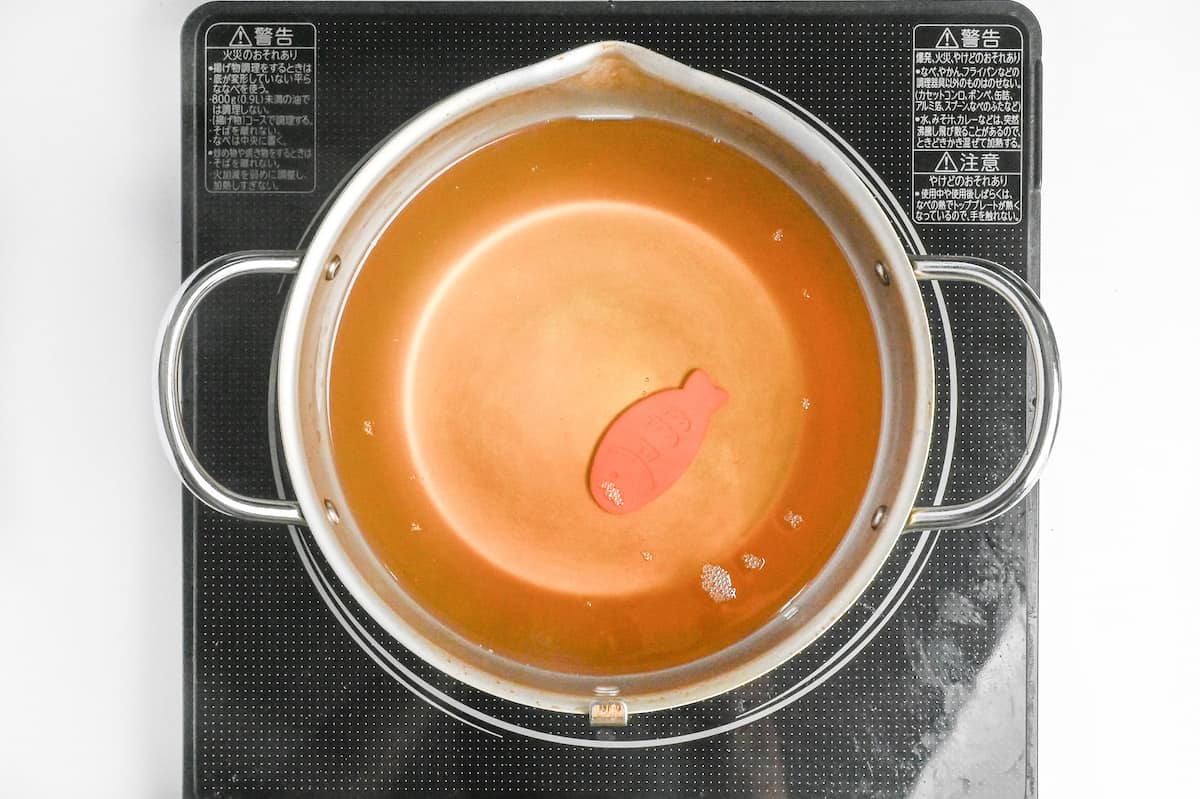
Take your chilled ingredients from the refrigerator and freezer. Pour the cold water and sparkling water into a bowl, add an egg yolk, and whisk gently just until combined.

Add your chilled flour mixture in three batches, gently folding with chopsticks. Resist the urge to whisk until smooth! Those lumps are actually your friends.
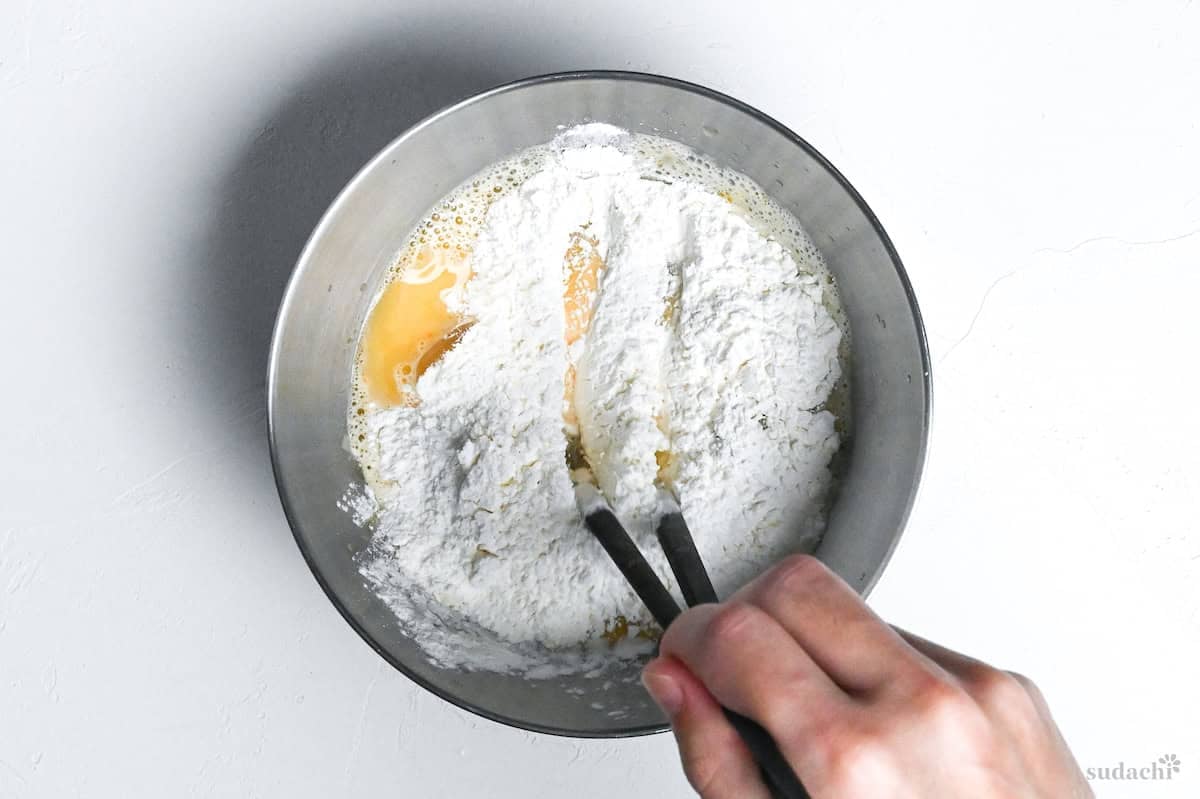
In tempura batter, lumps aren’t just acceptable – they’re desirable! Those pockets of unmixed flour create the characteristic irregular surface and light texture of great tempura. Over-mixing activates gluten, which leads to a chewy coating instead of a crisp one.

The batter should be thin – thinner than pancake batter – so the eel’s shape remains visible through the coating.
If needed, add a few ice cubes to keep the batter cold, especially if you’re frying multiple batches.
Never make tempura batter ahead of time. The longer it sits, even in the refrigerator, the more gluten develops and the heavier your tempura becomes. Always mix your batter immediately before frying for the best results.
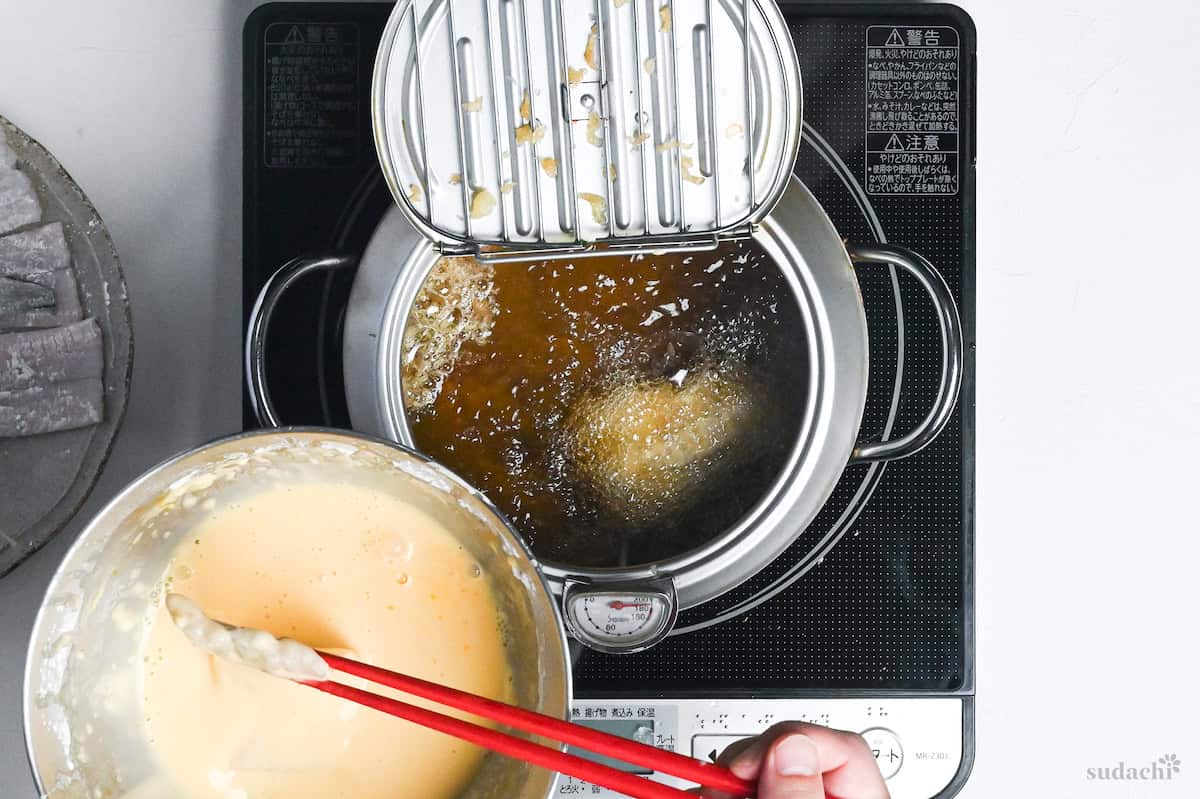
Dip each piece of eel completely in the batter, and carefully slide it into the preheated oil, skin-side down first.
For the first minute, don’t touch the eel! Let the batter set before attempting to turn it. Once the coating has firmed, gently flip it once or twice during cooking to ensure even browning.

When the tempura starts to take shape and the batter begins to set (about 1 minute in), you can try a decorative technique: use chopsticks (or your fingertips) to drizzle a small amount of additional batter over the frying tempura. This creates delicate tendrils that add visual interest and extra crunch!
Keep an eye out for visual cues that’ll let you know when the tempura is good to go. You’re looking for a golden amber color, what we call “fox-color.” The batter should feel firm when you give it a gentle press with chopsticks. This takes about 3-5 minutes total.

Once beautifully golden, immediately transfer the tempura to a wire rack set over a tray – never directly onto paper towels, which can make the bottom soggy. This draining step is especially important for eel tempura, as the coating tends to absorb more oil than vegetable tempura.

Serve immediately while crisp, accompanied by traditional tempura dipping sauce (tentsuyu), grated daikon radish, and a sprinkle of sea salt. The contrast of the hot, crispy eel with cool, tangy condiments creates that perfect balance that makes tempura so irresistible!
Jump to Full Recipe MeasurementsEssential Tips & Tricks
- Always chill your ingredients: Keep water, flour mixture, and even utensils cold in the refrigerator or freezer beforehand. This prevents gluten formation and creates that perfect crispy coating.
- Remove all slime thoroughly: Rub salt on the eel and pour hot water over it to make the slime visible. Taking time with this step eliminates fishy odors and improves flavor.
- Don’t skip the flour dusting: A light coating of flour before dipping in batter creates a moisture barrier that helps the batter adhere perfectly.
- Mix the batter at the last minute: Only prepare your batter right before frying. Letting it sit, even briefly, develops gluten and creates heavy, chewy tempura.
- Maintain proper oil temperature: Too hot and the outside burns before the inside cooks; too cool and the batter absorbs excess oil. Use a thermometer for best results.
- Drain properly: Always drain on a wire rack, never directly on paper towels, to maintain crispness on all sides.
With these simple tips in mind, you’re set for success every time you make Conger Eel Tempura.
Storage and Reheating Tips
Tempura reaches its peak quality immediately after frying, but any leftovers can be stored in a single layer in an airtight container in the refrigerator for up to 2 days.
For reheating, avoid microwaves entirely, as they create steam that destroys crispness. Instead, place pieces on a wire rack in a preheated 200°C (400°F) oven for 3-5 minutes until thoroughly heated and re-crisped.
Serving Suggestions

FAQ
Here are answers to frequently asked questions I have received across all platforms, including here, YouTube, Instagram, and Pinterest. If you have any questions, feel free to send them to me anytime! It will be a big help for everyone in this community!
Yes, you can use frozen conger eel, but thaw it completely in the refrigerator overnight. Pat it very dry with paper towels before proceeding, as frozen fish releases more moisture. The hot water treatment is still necessary for removing any remaining slime.
You can use just regular cold water. Sparkling water adds extra bubbles that create a lighter texture, but traditional tempura recipes don’t include it. When you use only regular water, make sure it’s ice-cold to prevent gluten formation.

I hope you enjoy this Conger Eel Tempura recipe! If you try it out, I’d really appreciate it if you could spare a moment to let me know what you thought by giving a review and star rating in the comments below. It’s also helpful to share any adjustments you made to the recipe with our other readers.Thank you!
More Tempura Recipes

Anago no Tempura (Conger Eel Tempura)
Ingredients
- 4 conger eel fillets whitespotted, butterflied fillets (see note)
- 2 tbsp salt
- cooking oil neutral flavor for deep frying
- cake flour or starch for dusting
Tempura Batter
- 75 ml cold water chilled
- 50 ml carbonated water chilled
- 1 egg yolk
- 15 g cornstarch
- 75 g cake flour
- ice cubes
Serving suggestion (optional)
- tempura dipping sauce (tentsuyu)
- salt
- grated daikon radish (daikon oroshi)
My recommended brands of ingredients and seasonings can be found in my Japanese pantry guide.
Can’t find certain Japanese ingredients? See my substitution guide here.
Instructions
- Before starting this recipe, be sure to chill all of the tempura ingredients thoroughly (including the dry ingredients – I put them in the freezer).While you wait, place 4 conger eel fillets in a bowl and sprinkle with 2 tbsp salt. Massage the salt over the fillets to help break down the slimy layer on the surface, then wash thoroughly with running water.

- Lay the conger eel fillets flat on a cutting board with the skin side facing up. Cover it with kitchen paper, then pour hot water (around 70 °C (158 °F)) over the top to reveal the slime which will turn white.

- Use the blunt side of a knife to gently scrape off the slime, then dry them thoroughly with kitchen paper.

- If your fillets are particularly thick, make small vertical cuts along the flesh side about 3-4mm apart and a little over halfway through the flesh. This will break any remaining small bones.

- Cut the fillets into 15cm/6" pieces, or your preferred size that fits inside your cooking pot.

- Start heating your cooking oil to 180 °C (356 °F) – 190 °C (374 °F). Dust the surface of the eel fillets with a thin layer cake flour and brush off any excess.

- When your oil is almost ready, take a mixing bowl and add 75 ml cold water, 50 ml carbonated water and 1 egg yolk straight from the fridge. Whisk gently until combined.

- Mix 15 g cornstarch and 75 g cake flour together in a small bowl, then add it to the egg mixture in 3 batches. Rather than whisking, use chopsticks to draw crosses in the mixture until there is no more dry flour. Lumps are perfectly okay, do not overmix.

- If you are making multiple batches or are in a warm environment, add a few ice cubes to the batter.

- Once the oil is hot, dip the flour-dusted eel fillets in the batter and then place them straight into the pot. Fry in batches to avoid overcrowding the pot.

- After 1 minute, sprinkle a small amount of extra batter over the fillets for added texture.

- Fry for about 3-5 minutes or until the batter becomes lightly browned, then transfer to a wire rack to drain the excess oil.

- Serve immediately with tempura dipping sauce (tentsuyu), a sprinkle of salt, and some grated daikon radish (daikon oroshi). Enjoy!

Notes
- You can use other kinds of conger eel, but cooking time and serving number might change depending on size and thickness.
- Egg yolk can be replaced with 2 tsp of egg mayonnaise (this is convenient if you want to half the recipe and use 1 tsp mayonnaise).
- If you’re looking for an eggless tempura batter, check out my shojin age recipe.
- Serve Anago no Tempura with tempura rice bowl (tendon), kake udon or zaru soba.
- Leftover tempura batter can be used for other ingredients such as shrimp, eggplant, sweet potato etc. You can also make your own tenkasu (tempura flakes) to serve with udon and soba.
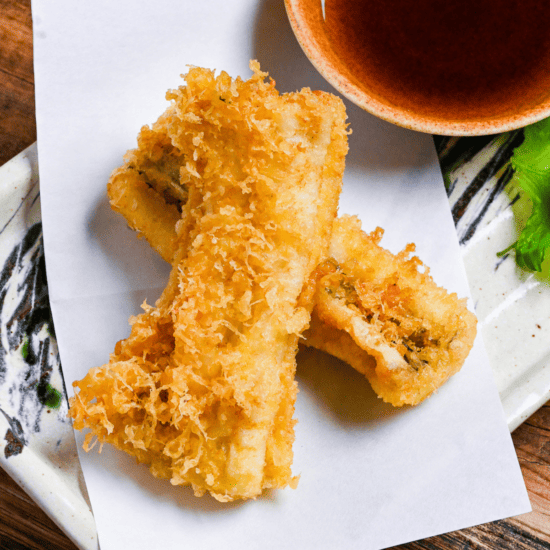


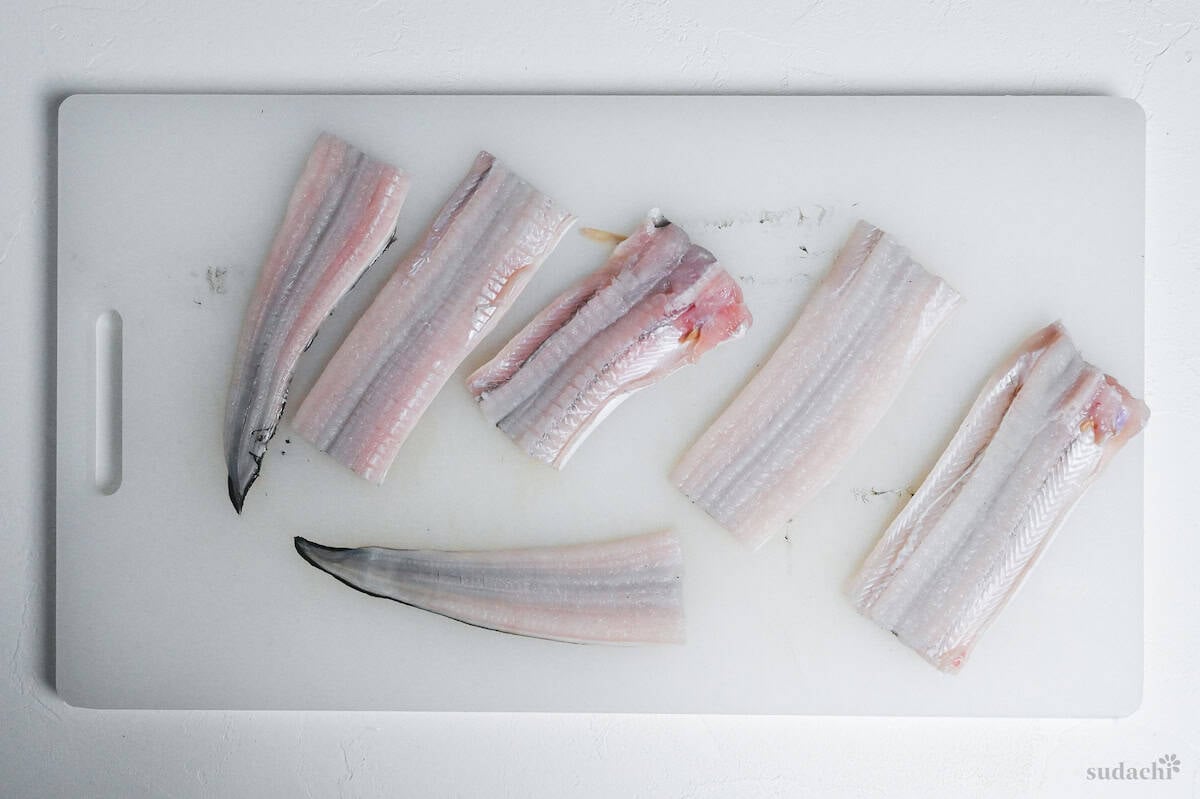
Leave a rating and a comment